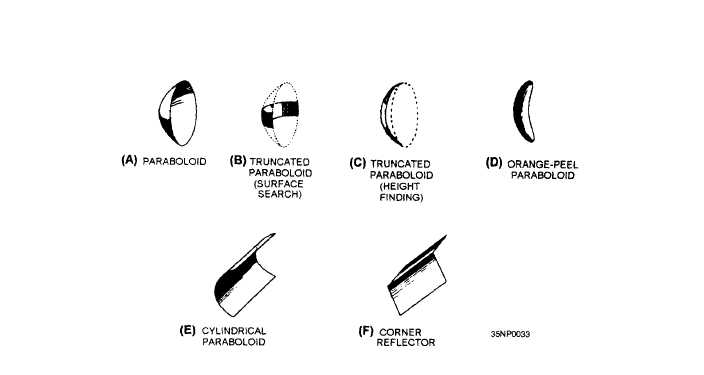tic that would destroy the narrow pattern from the
parabolic reflector. This destruction is prevented by
the use of a hemispherical shield (not shown) that
directs most of what would otherwise be spherical
radiation toward the parabolic surface. Without the
shield, some of the radiated field would leave the
radiator directly, would not be reflected, and would
serve no useful purpose.
The shield makes the
beamsharper, and concentrates the majority of the
power in the beam. The same results can be obtained
by using either a parasitic array to direct the radiated
field back to the reflector, or a feed horn pointed at
the paraboloid.
The radiation pattern of the paraboloid contains
a major lobe, which is directed along the axis of the
paraboloid, and several minor lobes, as shown in figure
2-40. Very narrow beams are possible with this type
of reflector. View A of figure 2-41 illustrates the
parabolic reflector.
Truncated Paraboloid
While the complete parabolic reflector produces
a pencil-shaped beam, partial parabolic reflectors
Figure 2-40.—Parabolic radiation pattern.
produce differently shaped beams. View B of figure
2-41 shows a horizontally truncated, or vertically
shortened, paraboloid.
This type of reflector is
designed to produce a beam that is narrow horizontally
but wide vertically. Since the beam is wide vertically,
it will detect aircraft at different altitudes without
changing the tilt of the antenna. It also works well
for surface search radars to overcome the pitch and
roll of the ship.
Figure 2-41.—Reflector shapes.
2-24




